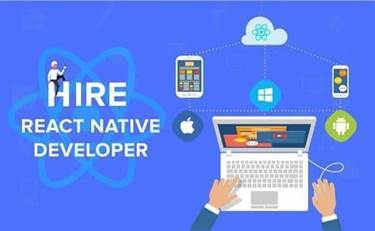With many practical applications for the technology already being implemented and explored, blockchain is finally making a name for itself in no small part because of Bitcoin and cryptocurrency. As a buzzword on the tongue of every investor in the nation, blockchain stands to make business and government operations more accurate, efficient, secure, and cheap, with fewer middlemen. Pieces of data are stored in data structures known as blocks, and each network node has a replica of the entire database.

You would log in to online banking and transfer the amount to the other person using their account number. When the transaction is done, your bank updates the transaction records. In contrast, in a traditional database, if someone makes a mistake, it may be more likely to go through. In addition, every asset is individually identified and tracked on the blockchain ledger, so there is no chance of double spending it . Using this process, they could transfer the property deed without manually submitting paperwork to update the local county’s government records; it would be instantaneously updated in the blockchain.
Google’s Topics API: Rebranding FLoC Without Addressing Key Privacy Issues
Block time refers to the time taken to generate a new block in a blockchain. Different blockchains have different block times, which can vary from a few seconds to minutes or may be in hours too. The header contains metadata such as a timestamp which has a random number used in the mining process and the previous block’s hash. Every transaction in this ledger is authorized by the digital signature of the owner, which authenticates the transaction and safeguards it from tampering. Hence, the information the digital ledger contains is highly secure. Information provided on Forbes Advisor is for educational purposes only.
BLK DNM To Unveil FW23 Collection Powered By Blockchain Technology – Forbes
BLK DNM To Unveil FW23 Collection Powered By Blockchain Technology.
Posted: Thu, 15 Jun 2023 10:42:18 GMT [source]
Computational power is limited, and developers pay with ether to use the Ethereum blockchain. Users also buy and spend ether to interact with its various decentralized applications. For example, CryptoKitties is a popular app built on top of the Ethereum blockchain that allows individuals to buy collectible cartoon cats. Decentralized asset market, where you can buy, sell, and trade fractional ownership of high-value paintings, real estate, and companies via interoperable databases, without any kind of intermediary.
Blockchain Use Cases and Applications
A consensus algorithm is used for verifying information authenticity; proof of stake and proof of work are two frequently used consensus methods. Consortium blockchains are commonly used in industries where multiple organizations need to collaborate on a common goal, such as supply chain management or financial services. One advantage of consortium blockchains is that they can be more efficient and scalable than public blockchains, as the number of nodes required to validate transactions is typically smaller. Additionally, consortium blockchains can provide greater security and reliability than private blockchains, as the consortium members work together to maintain the network. Some examples of consortium blockchains include Quorum and Hyperledger. The implementation of the blockchain within bitcoin made it the first digital currency to solve the double-spending problem without the need of a trusted authority or central server.

Therefore, the immutable records component makes it extremely difficult to hack the system. A non-fungible token is a unique, blockchain-based identifier that records the ownership of goods. NFT ownership is recorded and secured in a blockchain so that the public can see whoever the owner of a certain item is.
Analyzing who might be over- and undervalued in India’s fintech market
This enables many types of organizations and trading partners to access and share data, a phenomenon known as third-party, consensus-based trust. National, state, and local governments are responsible for maintaining individuals’ records such as birth and death dates, marital status, or property transfers. Yet managing this data can be difficult, and to this day some of these records only exist in paper form. And sometimes, citizens have to physically go to their local government offices to make changes, which is time-consuming, unnecessary, and frustrating. Blockchain technology could simplify this recordkeeping and make the data far more secure. The average homeowner sells his or her home every five to seven years, and the average person will move nearly 12 times during their lifetime.
- This impressive layer of security also means it’s virtually impossible for malicious agents to tamper with the data stored on blockchains.
- As of 2016, some businesses have been testing the technology and conducting low-level implementation to gauge blockchain’s effects on organizational efficiency in their back office.
- The average homeowner sells his or her home every five to seven years, and the average person will move nearly 12 times during their lifetime.
- „Blockchains are made of, well, blocks,“ explains Lorien Gabel, co-founder and CEO of Figment.io.
- For all of its complexity, blockchain’s potential as a decentralized form of record-keeping is almost without limit.
- Change an amount or number in the block once it’s been added and these signatures change too.
Instead, the blockchain is copied and spread across a network of computers. Whenever a new block is added to the blockchain, every computer on the network updates its blockchain to reflect the change. A smart contract is a computer code that can be built into the blockchain to facilitate a contract agreement. Smart contracts operate under a set of conditions to which users agree. When those conditions are met, the terms of the agreement are automatically carried out.
What is a Blockchain Platform?
Therefore, Ethereum is also a construction set for building decentralized applications. Instead of building their own blockchains from scratch, developers can use Ethereum’s blockchain. Smart contracts like these are part of what makes Ethereum compelling to adopters.

Blockchain networks like Bitcoin use a lot of electricity to validate transactions, leading to environmental concerns. For example, Bitcoin consumes more electricity than a small, medium-sized European country, and Bitcoin mining is threatening how to build a blockchain China’s climate change goals. When sending Bitcoin, you pay a small fee for a network of computers to confirm your transaction is valid. Your transaction is then bundled with other transactions pending in a queue to be added to a new block.
How is data added to a blockchain?
We hope this guide gave you the confidence to have conversations with friends and acquaintances about the blockchain and that it demystified and simplified an often scary topic. Refer to it whenever you need to brush up on any blockchain concepts. ETFs are a basket of securities that track an asset or index you can buy or sell on an exchange throughout the day. For example, many traditional ETFs will include bonds, currencies, commodities, and stocks and track the S&P 500 Index.
